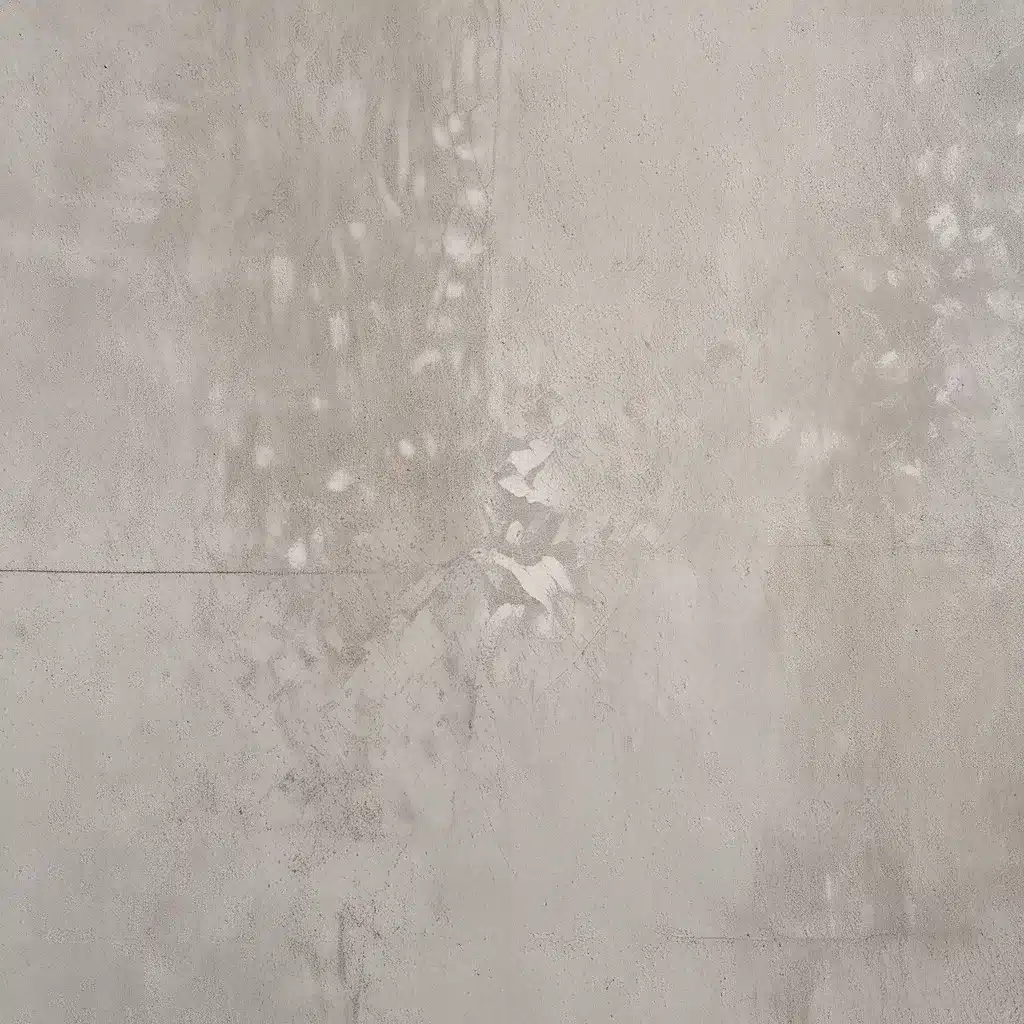
Concrete Discoloration: Causes, Prevention, and Remedies
Imagine this scenario: You’ve just had a brand new concrete driveway installed, and you can’t wait to show it off to all your neighbors. But as soon as the concrete dries, you notice these unsightly splotches and discoloration all over the surface. What the heck happened? Well, my friend, you’re about to find out.
Unraveling the Mystery of Concrete Discoloration
Concrete discoloration is one of those perplexing issues that can really put a damper on an otherwise beautiful concrete installation. It’s like a concrete chameleon – the surface can morph into all sorts of unexpected hues, from light and patchy to dark and splotchy. And the worst part is, it can happen for a whole host of reasons!
According to the experts at Duomit, some of the most common culprits behind concrete discoloration include things like:
-
Calcium chloride mixtures: This chemical additive can speed up the hydration process, but it also has a sneaky way of delaying the hydration of the ferrite compound in Portland cement. The result? Lighter areas surrounded by darker, uneven patches.
-
Cement alkalis: The inherent alkalinity of cement can also contribute to discoloration, especially if the concrete isn’t properly cured.
-
Hard troweling: When you overwork the concrete surface with a trowel, you can end up with some areas that are dramatically darker than the rest. It’s like concrete weight-lifting – the more you compact it, the darker it gets.
-
Wet subsurface: If the ground beneath your concrete is holding onto too much moisture, it can lead to uneven drying and discoloration on the surface.
-
Varying cement-water ratios: Inconsistencies in the concrete mixture, like having some areas with more water than others, can cause patchy, discolored results.
And the list goes on! The bottom line is, there’s no single smoking gun when it comes to concrete discoloration. It’s usually a combination of factors that can create those unsightly color variations.
Avoiding the Discoloration Dilemma
Alright, now that we know what can cause concrete discoloration, let’s talk about how to prevent it in the first place. After all, an ounce of prevention is worth a pound of cure, as they say.
One of the most important things is to maintain consistency throughout the entire concrete project. The experts at The Concrete Network emphasize that inconsistencies in materials, mix proportions, and even workmanship can all contribute to discoloration.
So, what can you do? Well, for starters, make sure your ready-mix supplier is delivering a consistently-mixed batch every time. That means the cement, aggregates, water, and any additives need to be blended together just right. And if you’re the one doing the mixing on-site, be extra vigilant about maintaining those proportions.
Another key factor is proper curing. The Concrete Network experts recommend using methods like wet curing, curing compounds, or even leaving the forms in place to help the concrete cure evenly and prevent discoloration.
And speaking of forms, be sure to use forms that are in good condition and won’t absorb water or leak around the edges. Older, worn-out forms can lead to color differences between the new and old concrete.
One last tip: Avoid adding calcium chloride to the mix if color consistency is a priority. This handy accelerator can cause some major discoloration issues, so it’s best to steer clear if you want a nice, even look.
Tackling Existing Discoloration
Okay, so you’ve done everything right, but you still ended up with a discolored concrete surface. Now what? Well, don’t worry, there are a few tricks up my sleeve to help you get that concrete looking its best again.
First and foremost, try a good old-fashioned hot water flush and scrub. According to The Concrete Network, this simple solution can often do the trick, especially for lighter discoloration. Just grab a stiff brush and some hot water, and get to work scrubbing away those pesky spots.
If that doesn’t do the trick, you can try a mild acid solution, like 1-3% muriatic acid. But be super careful with this one – you don’t want to go overboard and start eating away at the concrete. Start with a low concentration, work in small areas, and be sure to rinse thoroughly afterwards.
And if all else fails, you can always try using a chemical stain to even out the color. Duomit suggests that darker stains can generally do a better job of hiding color variations than lighter ones.
Remember, when it comes to fixing concrete discoloration, patience and caution are key. You don’t want to end up making the problem worse, so always start with the mildest solutions and work your way up from there.
Wrapping Up
Well, there you have it, folks – the ins and outs of concrete discoloration, from the causes to the cures. It’s a tricky little bugger, but with the right knowledge and a bit of elbow grease, you can get that concrete looking good as new.
And remember, if you ever find yourself in a concrete conundrum, the team at Concrete Townsville is always here to lend a helping hand. They’ve seen it all when it comes to concrete issues, and they’re experts at finding the perfect solutions. So don’t hesitate to give them a call if you need some professional guidance.
Here’s to beautiful, evenly-colored concrete that makes your property the envy of the neighborhood. Cheers!

